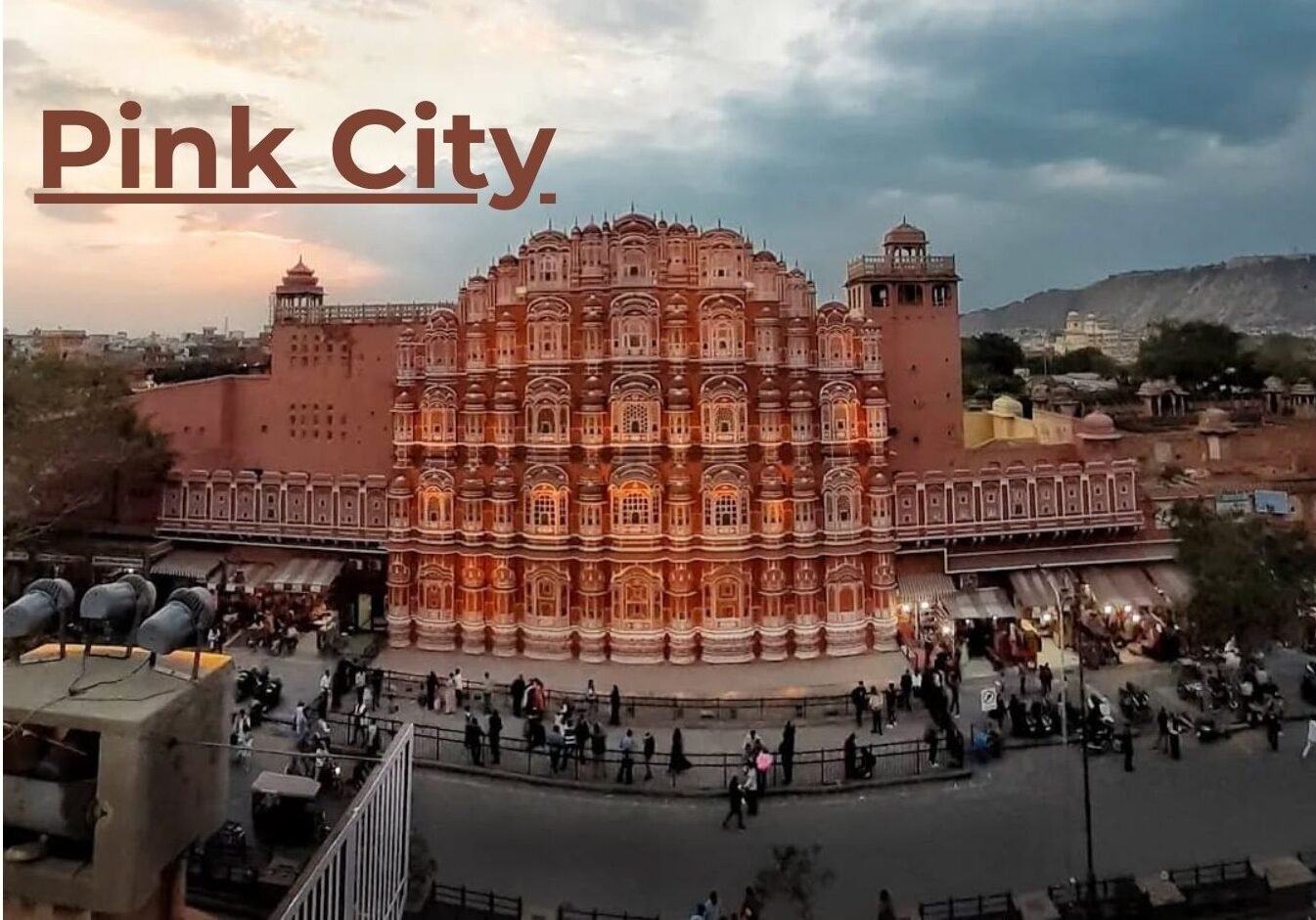Jaipur is more than a destination; it’s a living heritage, a city where every archway whispers tales of royalty and valour. This time, my journey from Delhi wasn’t just to see the Pink City, but to live inside its heart. I wasn’t a tourist checking into a hotel; I was a guest in history itself, staying within the regal walls of the City Palace. This is the story of that royal sojourn, and how it led me to discover the true, beating heart of Jaipur beyond the palace gates.
For those planning a trip, here’s a quick overview. The journey from Delhi is an easy morning train ride. The city’s crown jewels are the City Palace, Jantar Mantar, and Hawa Mahal. For a truly unique experience, consider booking a stay within the palace itself via platforms like Airbnb. For an authentic local experience, don’t miss the sunrise from Nahargarh Fort and a visit to the sacred Galta Ji (Monkey Temple).
A Night in Royalty: Staying Inside Jaipur’s City Palace
The true magic of this trip began the moment I stepped into my accommodation: the Maharaja Suite within the City Palace. This isn’t a hotel designed to look royal; it is royalty. Built between 1727 and 1732 by Maharaja Jai Singh II, the palace is still the active residence of Jaipur’s royal family, including the current Maharaja, Padmanabh Singh.
Staying here, a booking made possible through Airbnb, granted me access to private areas closed off to the public. The feeling of walking through quiet courtyards after hours is surreal. The highlight was a private dinner arranged at the Sheesh Mahal (Hall of Mirrors), where the walls, inlaid with intricate mirror work, reflected the candlelight, transporting me to another era. Sleeping in a room where history was made is an experience that defies words.
Is it worth it? For a history lover, absolutely. It’s a splurge, but it’s an unparalleled opportunity to connect with the city’s living heritage on an intimate level.
Beyond the Palace Walls: A Day of Wonders
My second day was about exploring the genius of Jaipur’s founders.
- Jantar Mantar: This is not a place of superstition, but a marvel of astronomical science. The name itself decodes its purpose: Jantar from the Sanskrit Yantra (instrument) and Mantar (to calculate). Each colossal structure is a precise instrument for measuring time, tracking stars, and predicting eclipses.
- Hawa Mahal (Palace of Winds): This iconic facade isn’t just beautiful; it’s a masterpiece of cultural design. Built so the royal women could observe street festivities in privacy, its 953 windows created a natural air conditioner. The honeycomb structure is also said to honor Lord Krishna’s crown. In a heartwarming moment, I met local college students volunteering to clean the monument before Diwali, their pride for their city shining brightly.
- Patrika Gate & Albert Hall Museum: I also visited the vibrant Patrika Gate, a modern tribute to Rajasthani art, and the stately Albert Hall Museum, a landmark of Indo-Saracenic architecture since 1887.
My day was made even more special when I met up with RJ, an Instagram follower who showed me his Jaipur, a city of hidden corners and warm stories, far from the tourist trail.
The Soul of Jaipur: Sunrises, Sacred Temples, and Local Crafts
To truly know Jaipur, you must wake up before the city does.
- Nahargarh Sunrise Trek: On RJ’s recommendation, I took a pre-dawn trek to Nahargarh Fort. This is a secret that locals cherish. As the sun rose, casting a golden glow over the Pink City, I consciously put my camera down. Some moments are meant to be felt, not just captured. In my haste, I realized I’d worn the wrong shirt for photos, a perfect reminder that travel is about authentic moments, not perfect pictures.
- Galta Ji (The Monkey Temple): Nestled in a mountain pass, this ancient pilgrimage site is a world away from the city’s polish. With its sacred water tanks (kunds), fed by a natural spring, and tribes of resident monkeys, it has a raw, primal energy. It felt less like a monument and more like a living sanctuary.
- Blue Pottery Workshop: I spent an afternoon learning about Jaipur’s famous Blue Pottery. Unlike clay pottery, it’s made from ground quartz and glass, giving it its distinctive colour and fragility. Watching an artisan patiently craft a piece, I understood why this GI-tagged art form is so treasured.
A Traveler’s Guide to an Authentic Jaipur
- Seek Unique Stays: Look beyond hotels. Platforms like Airbnb sometimes offer heritage stays that provide an unforgettable experience.
- Embrace the Mornings: The best way to experience Jal Mahal (built in 1699 and now a birdwatching paradise) or the view from Nahargarh is at sunrise.
- Connect with Locals: A cup of chai with Mohan Lal near Jal Mahal or a conversation with a local artist can be more memorable than any monument.
- Learn a Craft: Participate in a workshop like Blue Pottery to understand and appreciate the local culture on a deeper level.
- Look for Stories: The magic of Hawa Mahal isn’t just its facade; it’s the stories of the women who lived behind it and the students who clean it today.
A Final Reflection
In Jaipur, every door opened into a different century. Some led me into the opulent world of Maharajas, others into the profound silence of a sunrise hike. What stayed constant through it all was the warmth—of its people, its tea, and its sunrises. The real treasure of the Pink City isn’t just its palaces, but the soul that resides within and around them.

Leave a Reply